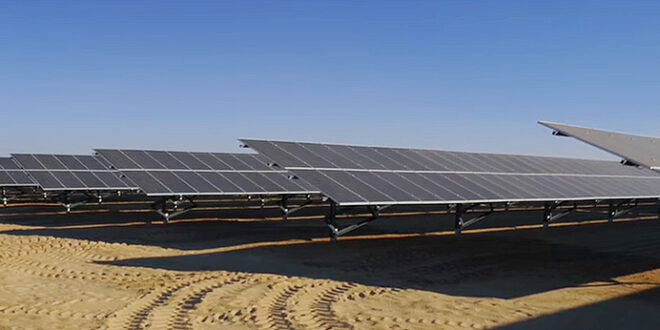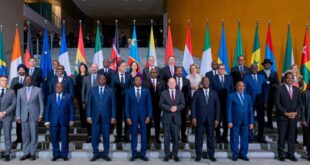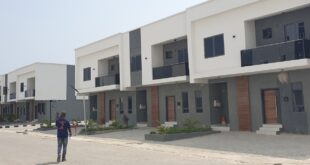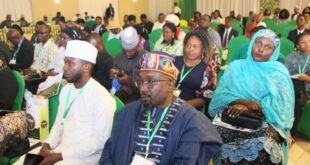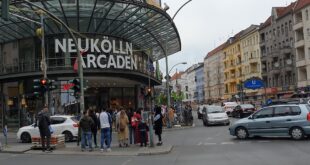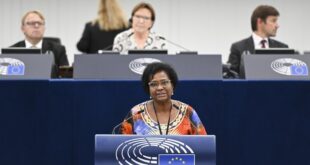Africa has immense potential for photovoltaics which has barely been utilized up until now. But a pioneering spirit is spreading across the continent, with many countries paving the way for ambitious photovoltaics projects. This is the conclusion of the Intersolar Solarize Africa Market Report 2020, prepared by the Becquerel Institute and the German Solar Association (BSW-Solar) with support from Intersolar Europe, the world’s leading exhibition for the solar industry.
The report, which analyses the market conditions in 16 African countries and presents multiple potential scenarios for the future, was first introduced to the public at the Global Solar Council Virtual Forum, which took place on 27-28 October 2020 and is now available for free download.
Electrification and renewable energies are right at the top of the political agenda in many African countries. And yet, the actual rates of installation in the past year remained low. With around 6.6 gigawatts (GW), the continent is only home to around one percent of the PV capacity installed worldwide as of the end of 2019. While the use of photovoltaic technology continues to rise globally, almost no new solar systems are being set up in the sunniest regions of the earth.
The Intersolar Solarize Africa Market Report 2020 takes a closer look and presents an analysis of the market in select African countries, for the first time including Senegal, Mali, Uganda, Madagascar, Kenya and Tunisia. The report investigates the various phases of the photovoltaics markets for 16 African countries as well as their individual regulatory conditions and potential for photovoltaic installations. It also issues a clear call to utilize the potential that already exists.
A new pioneering spirit and dynamic developments
Closer observation shows that there is plenty happening on the continent. Many countries have projects in the pipeline, some on a significant scale, and the underlying political conditions are improving all the time. For instance, Algeria is planning to install photovoltaic systems with a combined capacity of 4 GW by 2024, while the end of 2019 marked the completion of Egypt’s Benban Solar Park. With a total installed capacity of 1.5 GW and six million photovoltaic panels, Benban is the largest solar park in Africa and amongst the biggest in the world. And Egypt is planning to install another 3.5 GW of solar energy capacity by 2027.

Kenya had plans to set up commercial PV installations with a total capacity of 500 megawatts (MW) as of 2019 and contracts were recently finalized to build a solar park of the same size in Mali.
“Africa is on the threshold of a major transformation, which can best be described as a kind of wave that just keeps swelling. We are excited to see what will come next,” says David Wedepohl, CEO of the German Solar Association (BSW-Solar).
Multifarious scenarios for the future
The report presents four potential scenarios for the future of photovoltaics in Africa. The “policy-driven” and “business as usual” scenarios are based on the various countries’ current expansion goals and assume cumulative photovoltaic capacity of approximately 70 GW by 2030. More probable is the “solarize Africa accelerated” scenario, which presumes that photovoltaics in Africa will develop broadly in the same way as in other parts of the world, giving 170 GW of installed capacity by 2030.
The central assumption of the fourth scenario – the “solarize Africa paradigm shift,” which builds on the current atmosphere on the continent – is that the African markets are in some respects skipping over the fossil fuel age altogether. It combines the installed PV capacity with the targets laid out in the Paris Agreement. With a cumulative capacity of 600 GW by 2030, this scenario envisions Africa as a very important region on the future global PV market.
Clean water and electricity with photovoltaics
Since half a billion people in sub-Saharan Africa live without access to electricity, this year’s report analyzes the competitiveness of standalone local power grids, or microgrids, for the first time. It is estimated that Africa makes up about half of the world market for these grids. Clean and reliable electricity is key to improving economic and societal conditions in African countries.
This year’s report also considers the potential offered by combining solar energy and water for the first time. A billion people in Africa do not have access to clean drinking water. Water desalination and purification plants as well as pump units powered by photovoltaic systems are needed as one of the building blocks of a safe and environmentally friendly water supply.
The lack of clean water is thus also a driving factor for photovoltaics deployment worldwide – while photovoltaics forms part of the solution to the many challenges present in this area. One example of the rise in innovative solutions for water and photovoltaics in Africa can be seen in Kenya. A solar-powered microgrid desalination plant on the coast supplies 25,000 people with fresh water every day. Floating photovoltaic installations are also already in use in parts of Africa.
You can download the full Intersolar Solarize Africa Market Report 2020 here. On November 10, 2020, Intersolar Europe will introduce the Intersolar SOLARIZE study during its webinar “Africa on the rise,” taking place as part of the digital event series “The smarter E goes digital.” For further information and webinar registration, please click here.
© BSW-Solar
—–
Intersolar Europe
Intersolar Europe is the world’s leading exhibition for the solar industry, taking place annually at Messe München in Munich, Germany. Under the motto “Connecting solar business,” it brings together people and companies from around the world with the aim of increasing the share of solar power in our energy supply.
Intersolar Europe focuses on photovoltaics, solar thermal technologies, solar power plants, grid infrastructure, and solutions for the integration of renewable energies. Since being founded, it has become the most important industry meeting point for manufacturers, suppliers, distributors, and service providers in the global solar industry. The accompanying conference consolidates selected exhibition topics and showcases international markets, large-scale power plants, financing, and pioneering technologies.
With nearly 30 years of experience, Intersolar has the unique ability to bring together members of the solar industry from across the world’s most influential markets. Intersolar exhibitions and conferences are held in Munich, San Francisco, Mumbai, Bangalore, Mexico City, São Paulo, and Dubai. These global events are complemented by the Intersolar Summits, which take place in emerging and growing solar markets worldwide.
ees Europe, the continent’s largest and most international exhibition for batteries and energy storage systems, will take place in parallel to Intersolar Europe in 2021. The two exhibitions are complemented by Power2Drive Europe and EM-Power Europe. Power2Drive Europe is an international exhibition dedicated to charging infrastructure and e-mobility. EM-Power Europe is the international exhibition for energy management and integrated energy solutions. All four exhibitions are held at The smarter E Europe – the innovation hub for new energy solutions.
For more information on Intersolar Europe, please visit: www.intersolar.de/en
 THE AFRICAN COURIER. Reporting Africa and its Diaspora! The African Courier is an international magazine published in Germany to report on Africa and the Diaspora African experience. The first issue of the bimonthly magazine appeared on the newsstands on 15 February 1998. The African Courier is a communication forum for European-African political, economic and cultural exchanges, and a voice for Africa in Europe.
THE AFRICAN COURIER. Reporting Africa and its Diaspora! The African Courier is an international magazine published in Germany to report on Africa and the Diaspora African experience. The first issue of the bimonthly magazine appeared on the newsstands on 15 February 1998. The African Courier is a communication forum for European-African political, economic and cultural exchanges, and a voice for Africa in Europe.

